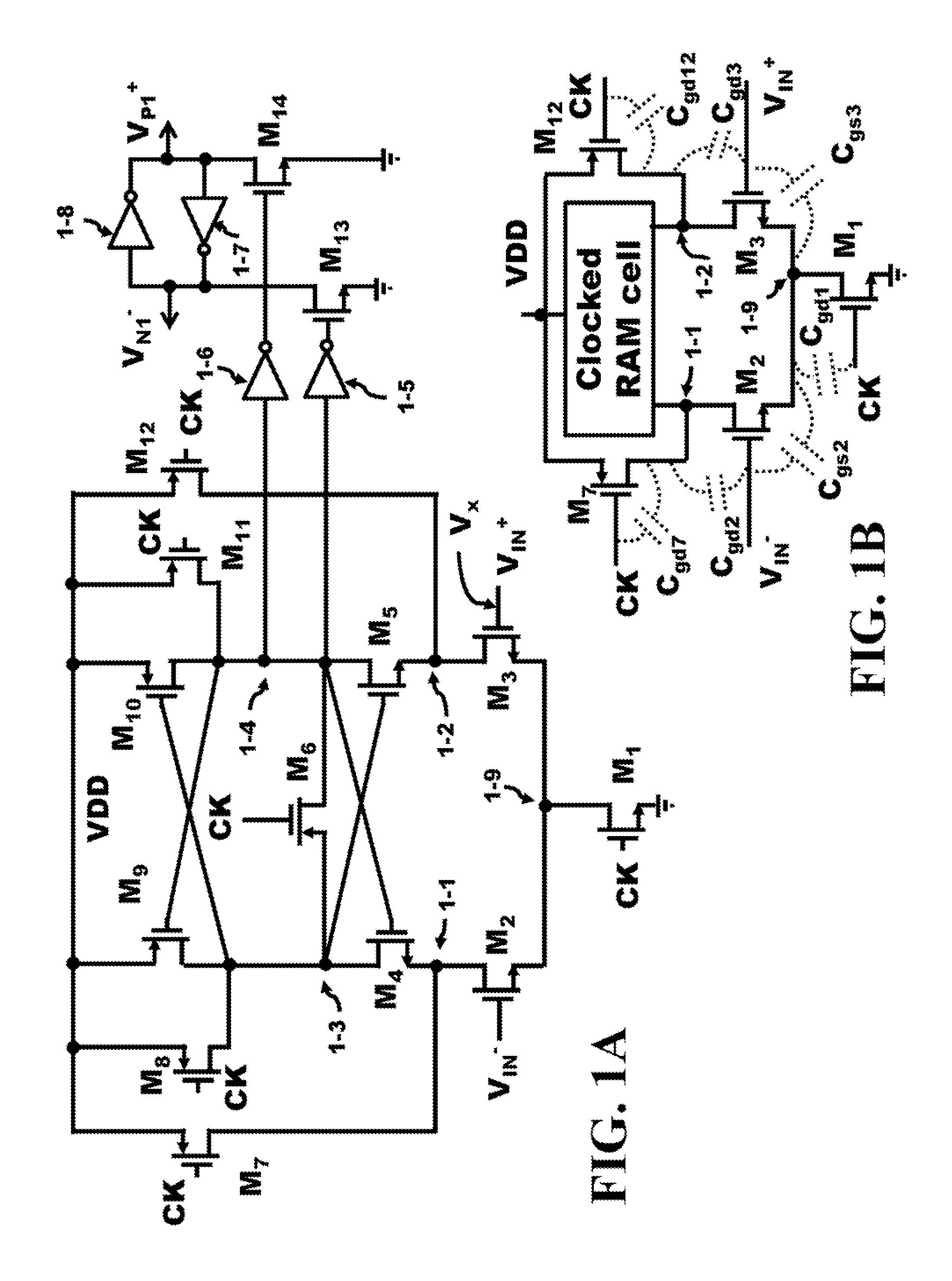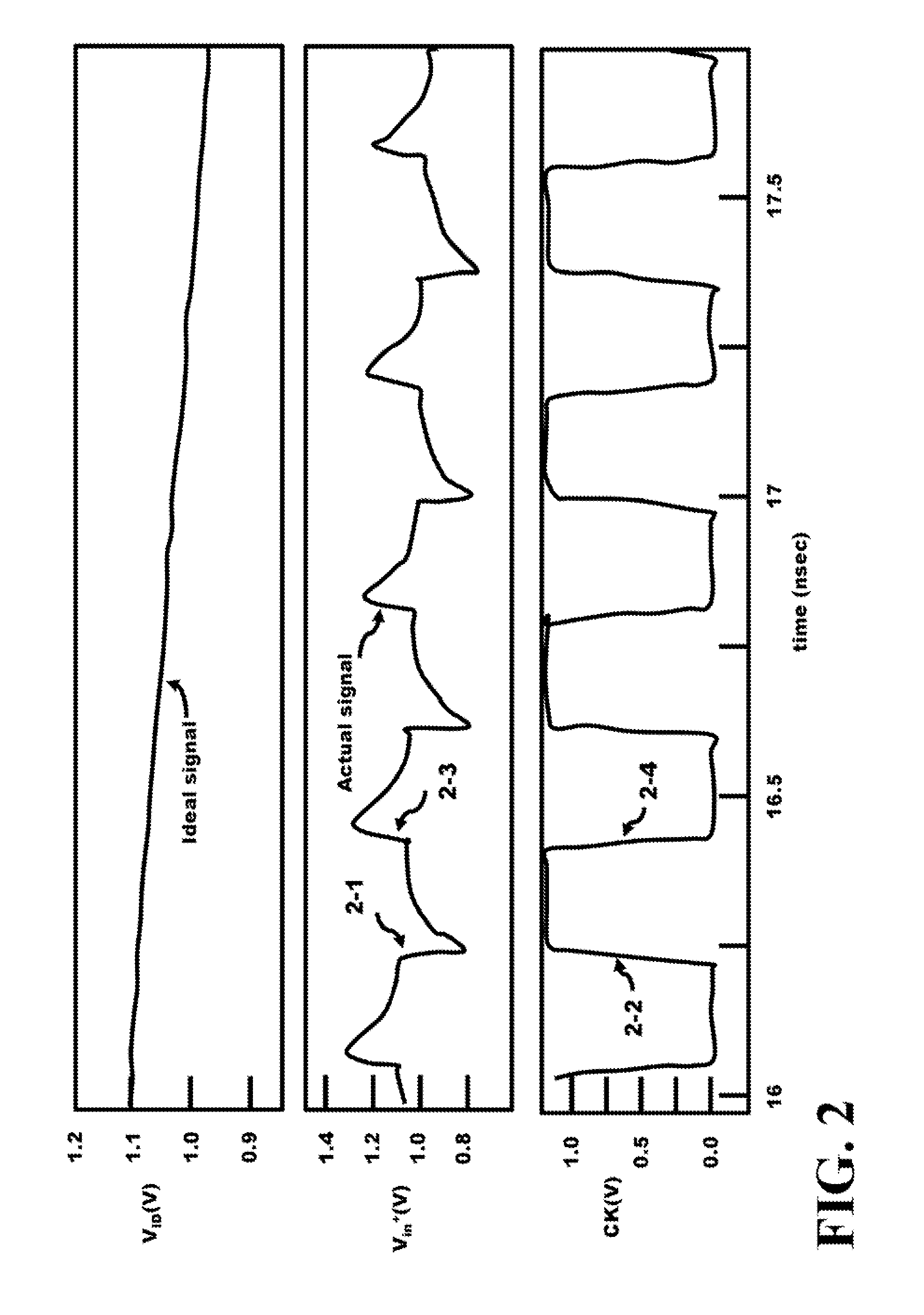Method and Apparatus for Reducing the Clock Kick-Back of ADC Comparators While Maintaining Transistor Matching Behavior
- Summary
- Abstract
- Description
- Claims
- Application Information
AI Technical Summary
Benefits of technology
Problems solved by technology
Method used
Image
Examples
Embodiment Construction
[0039]The inventions presented in this specification can be used in any wired or wireless system or any low power supply voltage design. The techniques are applicable to any amplifier design, ADC design, or PGA and ADC interface design. These techniques can be extended to other circuit designs where an increased bandwidth between two interfaces, a clock kick-back reduction, or a matched transistor within a circuit is required.
[0040]A comparator that is clocked in the first pre-amplifier stage is illustrated in FIG. 1A. The basic construction of the clocked pre-amplifier stage includes a ground switch M1 with a gate coupled to a clock CK. The drain of M1 1-9 is coupled to the source of two N-channel transistors M2 and M3. M2 is driven by VIN− while M3 is driven by the other differential input signal VIN+. The drain of M2 is coupled to 1-1 and is also coupled to the drain of P-channel transistor M7 controlled by the same clock CK. The drain of transistor M3 1-2 is coupled to the drain...
PUM
 Login to View More
Login to View More Abstract
Description
Claims
Application Information
 Login to View More
Login to View More - R&D
- Intellectual Property
- Life Sciences
- Materials
- Tech Scout
- Unparalleled Data Quality
- Higher Quality Content
- 60% Fewer Hallucinations
Browse by: Latest US Patents, China's latest patents, Technical Efficacy Thesaurus, Application Domain, Technology Topic, Popular Technical Reports.
© 2025 PatSnap. All rights reserved.Legal|Privacy policy|Modern Slavery Act Transparency Statement|Sitemap|About US| Contact US: help@patsnap.com



